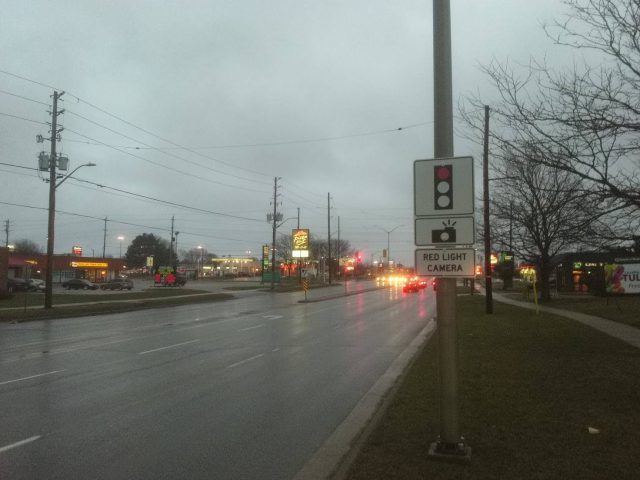It could be a costly morning drive for some Londoners if they choose to run red lights.

The first of the city’s new red light cameras will start snapping pictures Monday of vehicles that push through the intersection after the lights have turned red at Springbank and Wonderland.
Shane McGuire is the manager of roadway lighting and traffic control for the city and tells AM980 how they picked the locations for the cameras.
“A combination of collision history, field studies of red light running, and geography, as we want to make sure that not all of the locations were clumped together in one part of the city,” he said. “We want to make sure the cameras are spread out throughout the city.”
McGuire notes that if the camera snaps you running a red, a ticket will be sent to the owner of the vehicle.
“The fine is the same as police issue at $325 but there are no demerit points with the red light camera,” he said.
READ MORE: Toronto adding seniors safety zones, more red light cameras to reduce pedestrian fatalities
The following intersections are included in the red-light camera program:
- Commissioners Road E at Wellington Road
- Dundas Street at Clarke Road
- Exeter Road at Wharncliffe Road S
- Huron Street at Highbury Avenue N
- Oxford Street W at Wonderland Road N
- Oxford Street E at Adelaide Street N
- Queens Avenue at Adelaide Street N
- Queens Avenue at Talbot Street
- Springbank Drive at Wonderland Road S
- Windermere Road at Richmond Street
Eight of the 10 planned cameras will be up and running by the end of May. The last two at Queens and Talbot and Adelaide and Oxford won’t be live until the fall.
Staff expect city hall to collect roughly $4.5 million in ticket revenue over the course of the five-year program. It would be more than enough to cover the $3.8 million cost of the program, with anything left over being used to fund future road safety initiatives.
- Gas station clerk stabbed several times during violent attack at Ultramar in Montreal
- Canada’s most wanted list: Toronto suspect in fatal shooting at No. 1
- Man acquitted in Tina Fontaine murder found dead, says her aunt
- Canadians should expect politicians to support right to bail, Virani’s office says








Comments